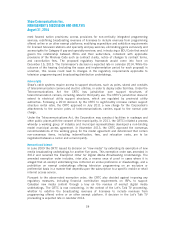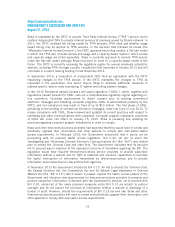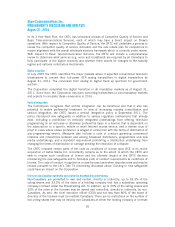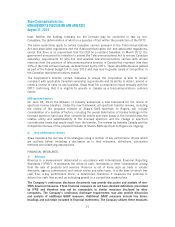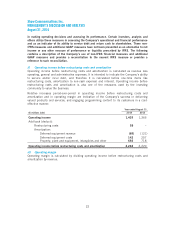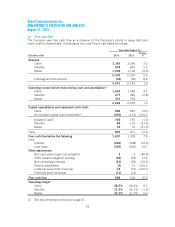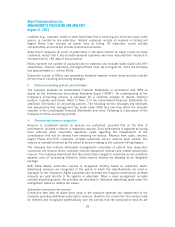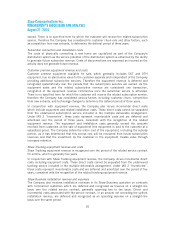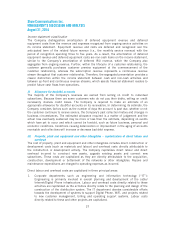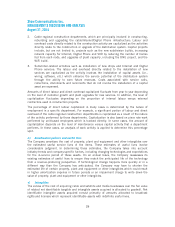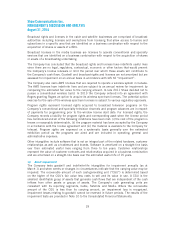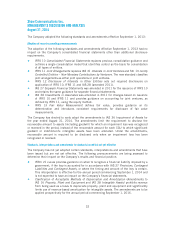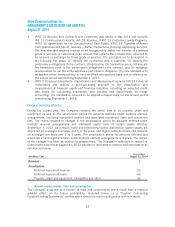Shaw 2014 Annual Report Download - page 32
Download and view the complete annual report
Please find page 32 of the 2014 Shaw annual report below. You can navigate through the pages in the report by either clicking on the pages listed below, or by using the keyword search tool below to find specific information within the annual report.Shaw Communications Inc.
MANAGEMENT’S DISCUSSION AND ANALYSIS
August 31, 2014
2. Cable regional construction departments, which are principally involved in constructing,
rebuilding and upgrading the cable/Internet/Digital Phone infrastructure: Labour and
overhead costs directly related to the construction activity are capitalized as the activities
directly relate to the construction or upgrade of the distribution system. Capital projects
include, but are not limited to, projects such as the new subdivision builds, increasing
network capacity for Internet, Digital Phone and VOD by reducing the number of homes
fed from each node, and upgrades of plant capacity, including the DNU project, and the
WiFi build.
3. Subscriber-related activities such as installation of new drops and Internet and Digital
Phone services: The labour and overhead directly related to the installation of new
services are capitalized as the activity involves the installation of capital assets (i.e.,
wiring, software, etc.) which enhance the service potential of the distribution system
through the ability to earn future revenues. Costs associated with service calls,
collections, disconnects and reconnects that do not involve the installation of a capital
asset are expensed.
Amounts of direct labour and direct overhead capitalized fluctuate from year to year depending
on the level of customer growth and plant upgrades for new services. In addition, the level of
capitalization fluctuates depending on the proportion of internal labour versus external
contractors used in construction projects.
The percentage of direct labour capitalized in many cases is determined by the nature of
employment in a specific department. For example, a significant portion of labour and direct
overhead of the cable regional construction departments is capitalized as a result of the nature
of the activity performed by those departments. Capitalization is also based on piece rate work
performed by unit-based employees which is tracked directly. In some cases, the amount of
capitalization depends on the level of maintenance versus capital activity that a department
performs. In these cases, an analysis of work activity is applied to determine this percentage
split.
iv) Amortization policies and useful lives
The Company amortizes the cost of property, plant and equipment and other intangibles over
the estimated useful service lives of the items. These estimates of useful lives involve
considerable judgment. In determining these estimates, the Company takes into account
industry trends and company-specific factors, including changing technologies and expectations
for the in-service period of these assets. On an annual basis, the Company reassesses its
existing estimates of useful lives to ensure they match the anticipated life of the technology
from a revenue-producing perspective. If technological change happens more quickly or in a
different way than the Company has anticipated, the Company may have to shorten the
estimated life of certain property, plant and equipment or other intangibles which could result
in higher amortization expense in future periods or an impairment charge to write down the
value of property, plant and equipment or other intangibles.
v) Intangibles
The excess of the cost of acquiring cable and satellite and media businesses over the fair value
of related net identifiable tangible and intangible assets acquired is allocated to goodwill. Net
identifiable intangible assets acquired consist primarily of amounts allocated to broadcast
rights and licenses which represent identifiable assets with indefinite useful lives.
28


